From Van to Sherman: Unearthing the unfinished legacy of Arshile Gorky
May 28, 2018
Arshile Gorky’s pioneering art has made him the subject of several books, documentaries, and even a nonprofit foundation dedicated to understanding his work. Yet, his revolutionary legacy also lives on outside of the art world—in one of the most unexpected of places—his home. We ventured to find this artistic oasis and, in doing so, learned more about the man behind the painting. This year marks the 70th anniversary of Gorky’s passing and the unassuming farmhouse that once inspired one of the 20th century’s best painters continues to inspire new generations.
Searching for Khorgom in America
Throughout the 19th and 20th centuries, Connecticut was the chosen home of some of the world’s greatest talents, such as impressionist painter J. Alden Weir, writer Truman Capote, the Beecher sisters, and the father of American literature—and the closest thing to Connecticut royalty—Mark Twain.
While the United States embraced a policy of rapid industrialization and urbanization, America’s third-smallest state remained (for the most part) an untouched rural and serene scenery. Consequently, scores of artists and creative minds across the country flocked to find inspiration in its lush gardens and quiet landscapes. Many Nutmeggers (residents of Connecticut) take great pride in the rich artistic legacy that runs through the veins of their beloved state. Yet, few in this state recognize the name of one of its most accomplished residents.
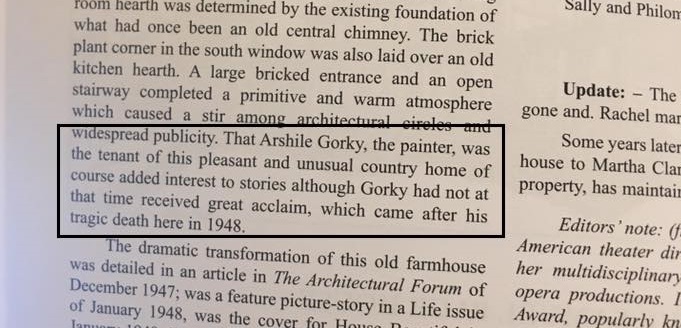 The town of Sherman’s local history book contains a sparse, but informative, entry on Gorky.
The town of Sherman’s local history book contains a sparse, but informative, entry on Gorky.
Arshile Gorky, born Vostanik Manoug Adoian (also spelled "Adoyan"), was a painter who helped develop the school of Abstract Expressionism. His paintings rest in the world’s most esteemed galleries, such as the MoMA (Museum of Modern Art), the Whitney Museum of American Art, and the Tate Modern in London, but many of them were conceived in a little studio in his home in Sherman, Conn.
Gorky, the Armenian boy from Khorgom (near Van) in Western Armenia who suffered immense pain and loss as a result of the Genocide, reinvented his image time and again as an adult, catapulting himself to the upper echelons of the art world. However, a series of crises in his adult life brought upon his untimely death in 1948; at the height of his artistic prowess, Gorky hanged himself in a shed outside his Sherman home at the tender age of 44.
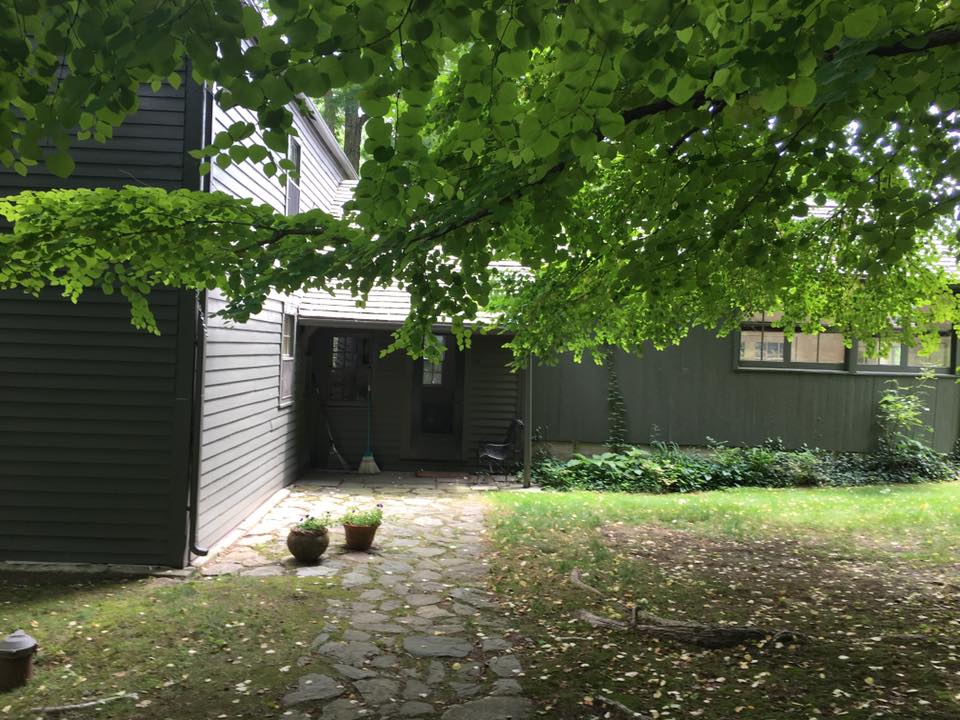 After living in many places throughout his tumultuous life, Gorky chose to settle in this charming farmhouse in a quiet, rural New England town—in what would become his final home. (Photo: Lilly Torosyan)
After living in many places throughout his tumultuous life, Gorky chose to settle in this charming farmhouse in a quiet, rural New England town—in what would become his final home. (Photo: Lilly Torosyan)
I have spent half of my life living in this beautiful state, frequenting her hiking trails and reservoirs, her colorful gardens and charming mom-and-pop farms. Yet, I never heard anyone utter Gorky’s name in after-church discussions or youth seminars. It wasn’t until college when, while interning for the Armenian Weekly newspaper, I came across Gorky’s biography online. Here was one of the most accomplished artists and Armenians (let alone, Armenian artists) in history, and I had never known his connection to my little state!
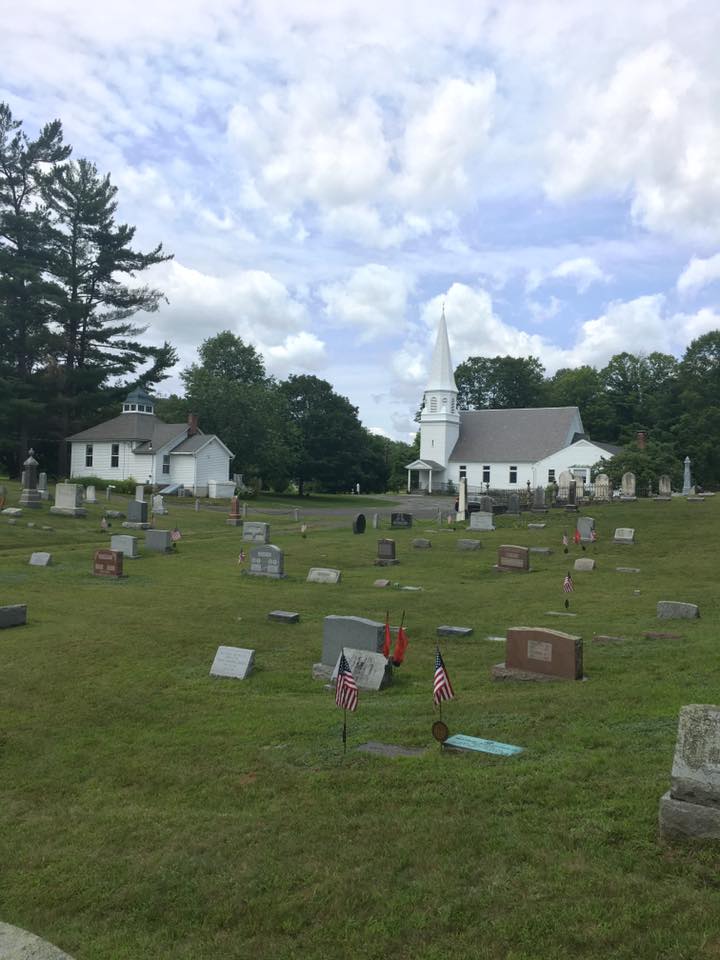 Luckily for us, the cemetery is quite small, so after a little wandering, we found our artist. (Photo: Lilly Torosyan)
Luckily for us, the cemetery is quite small, so after a little wandering, we found our artist. (Photo: Lilly Torosyan)Finding Gorky’s grave
Five years after learning about Gorky’s Connecticut connection, my family and I finally set out to visit his grave in the North Cemetery in Sherman—a very unassuming resting place for such a great man. There are no signs that lead to his grave, no shops in town with his memorabilia, no monuments—absolutely no indication that one of the world’s greatest artists lived and died just a few short miles away, in this small but proud historical town.
About a month ago, I was traversing the lands of Gorky’s youth, in Van. I witnessed the quiet loss of history and felt the loud rage of resistance inside of me. Looking around this beautiful empty cemetery, I could not help but draw comparisons.
“I have to find his house,” I told my family. After a few minutes of searching online for its whereabouts, the only clue I came across was Gorky’s moniker for his home: “The Glass House.” My mother suggested we go to the local historical society and ask for help. And so, we navigated to the Sherman Historical Society and Museum. The drive was along a bumpy dirt path—untouched from Gorky’s time, we joked. I looked outside to try to find a house that looked like the images online. Just like in Western Armenia, we were playing detective, trying to unearth history from her subdued sleep.
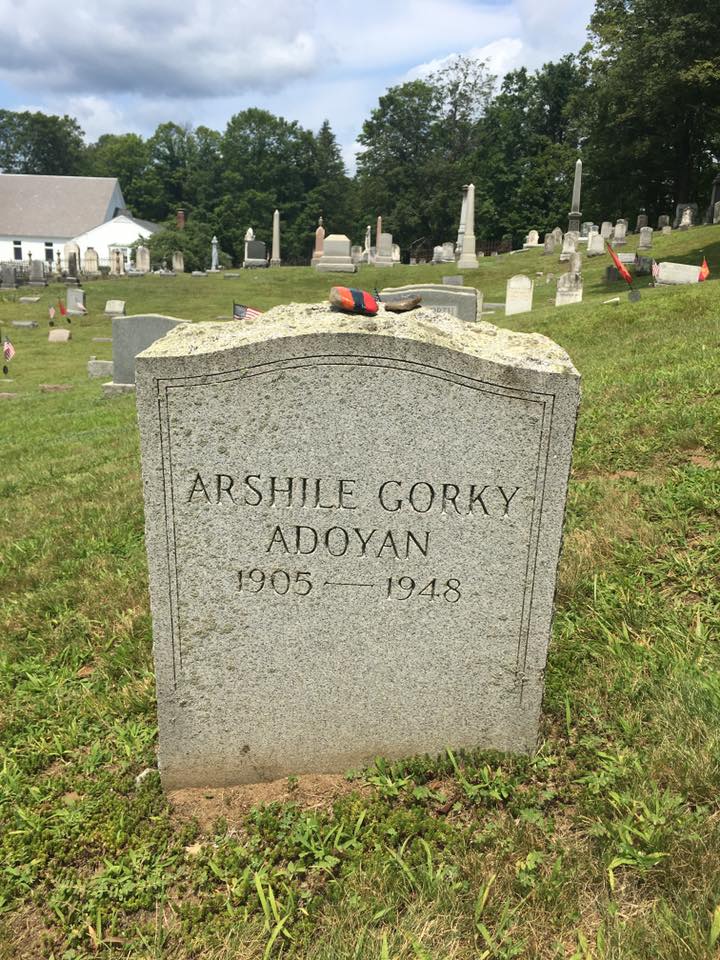 My father’s friend came to pay his respects last summer and placed a stone with a painted Armenian tricolor on his tombstone. It was still there, along with another stone with the Forget-Me-Not emblem of the Genocide Centennial. It goes without saying that very few visit Gorky here. (Photo: Lilly Torosyan)
My father’s friend came to pay his respects last summer and placed a stone with a painted Armenian tricolor on his tombstone. It was still there, along with another stone with the Forget-Me-Not emblem of the Genocide Centennial. It goes without saying that very few visit Gorky here. (Photo: Lilly Torosyan)The quest for the 'Glass House'
We pulled up to the side of the picturesque white farmhouse that now houses the town’s historical museum. I made my way to the building, but the area looked empty. All four doors were locked shut, and no one answered my knocks. There was a gift shop across the street. As my father and I walked in, we realized that this was the small but quintessential New England museum we were seeking. Looking around, I did not see a single indication of Gorky’s work or life.
Approaching the woman at the front desk, I asked, “Have you heard of the artist, Arshile Gorky?” She kindly shook her head. “I’m afraid I haven’t, but we can try to find him.” Flipping through the thick pages of the Sherman historical encyclopedia, she came across two small references to Gorky. “It looks like he didn’t own any property, but rented writer Malcolm Cowley’s house,” she said.
“Yes, he died broke,” I quipped. “Don’t most artists, unfortunately?” she responded, smiling. And so, Ms. Roberta Linkletter of the Sherman Historical Society found the address of Gorky’s residence, though she wasn’t sure if the house still existed. Closing the book, she turned to the woman behind her and stated, “See, we all learned about Gorky today!”
We put the address in our GPS. It was only a three-minute drive away and, sure enough, the house was still standing. I stepped outside to take some photos and immediately, dogs began barking. A woman came out of the side door and asked if I needed help. “This is going to sound weird, but…” “You’re here for Gorky,” she answered. “My name is Martha Clarke. I only have a few minutes, but please, come on in.” My mom and I helped ourselves to the kind offer. We were careful to not overstep our boundaries, but she insisted we were welcome to walk around inside.
We were the first to visit in the last year or so, but quite a few artists, writers, and photographers have stopped by in the 35 years Clarke has lived here. Few would be too keen on strangers frequenting their home to see where a previous tenant lived, but she seemed to enjoy it. Clarke humbly told us that she is a theater director and commutes from New York City. “So, Gorky’s legacy lives on!” I cheered. She beamed. Not realizing it at the time, the Glass House’s current resident is a trailblazing avant-garde artist in her own right, with multiple chefs-d'oeuvre and accolades to her name.
Quite the proud tenant, Clarke owns just about every book on Gorky ever published; a large photographic volume on the artist laid squarely on her coffee table. The house was built in 1802, she told us—the same year the town was established—and little has been altered in its two centuries of existence. The living room looked exactly like the famous photograph I had seen online. Clarke pulled out the book to show me the photograph.
Gone but not dead
When Clarke came across the property listing, she did not know about its connection to the famous artist, but quickly fell in love with the house and Gorky’s work, even befriending his family, and visits his children and grandchildren on occasion in Italy. She recalls the one time she met Gorky’s ex-wife, Agnes Magruder. When asked what she was liked, Clarke responded, “As WASPy as they come.” “The rumors were all true, then?” I jested. She grinned before continuing. “I was in Italy with the family when they received the phone call from London that their mother [Agnes] had died. That was very strange,” her voice tapered off.
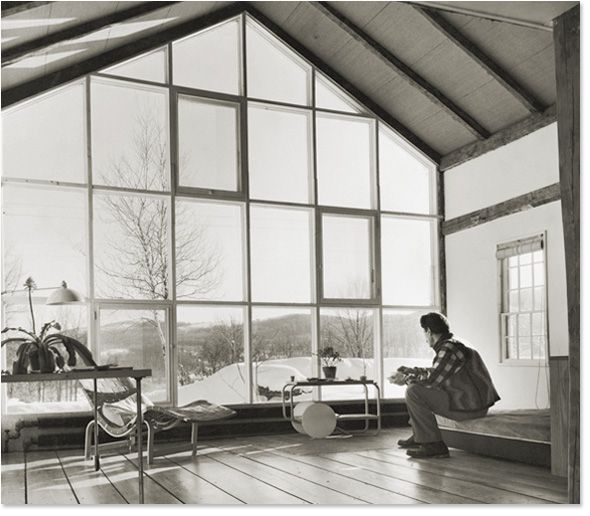 Like many artists of his time, Gorky’s move from the hustle and bustle of NYC to the calm, scenic Connecticut countryside provided much inspiration for his following works. The vast terrain outside his living room reminded Gorky of his homeland halfway across the world, his little village outside of Van. (Photo: Ben Schnall)
Like many artists of his time, Gorky’s move from the hustle and bustle of NYC to the calm, scenic Connecticut countryside provided much inspiration for his following works. The vast terrain outside his living room reminded Gorky of his homeland halfway across the world, his little village outside of Van. (Photo: Ben Schnall)
As we stood by the door to leave, Clarke asked us if we were Armenian. “What gave it away?” I thought amusingly. “I love Armenian folk music,” she said, smiling brightly. We stepped onto the front yard and were greeted by a massive, striking beech trunk. “That tree is very old; it was around during Gorky’s time,” says Clarke. Its myriad lengthy branches and deep roots look like a family tree drawing.
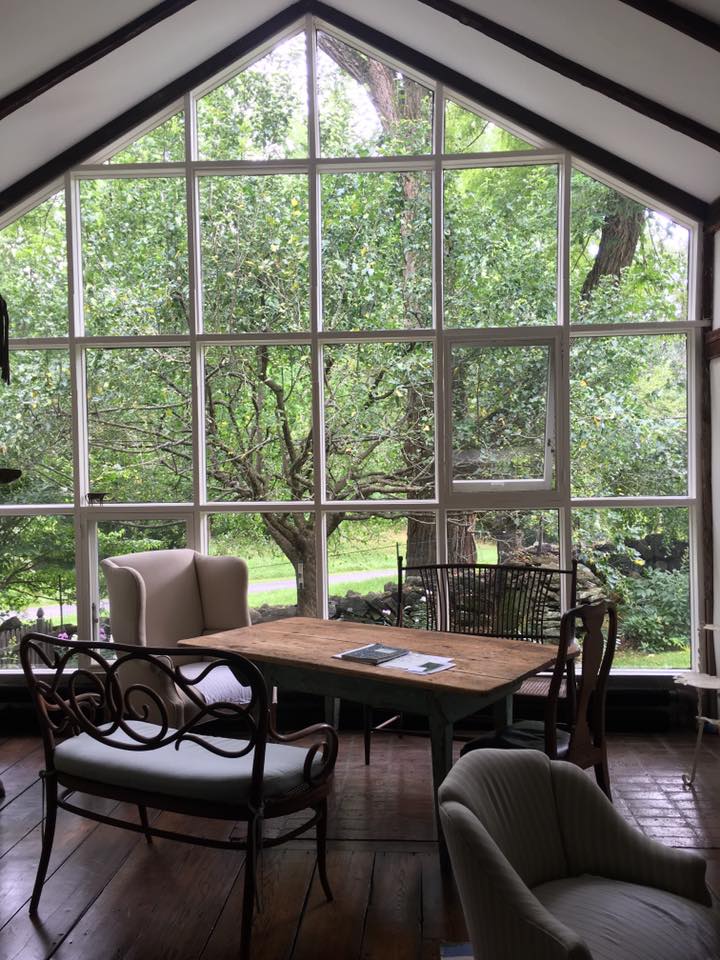 Today, overgrown trees eclipse the view from the living room, yet the area remains peaceful and secluded. It is no wonder, then, that many of Gorky’s pieces draw on the themes of nature and fertility. Clarke’s style incorporates a bit more furniture than Gorky’s décor, but the home’s foundations remain nearly untouched. (Photo: Lilly Torosyan)
Today, overgrown trees eclipse the view from the living room, yet the area remains peaceful and secluded. It is no wonder, then, that many of Gorky’s pieces draw on the themes of nature and fertility. Clarke’s style incorporates a bit more furniture than Gorky’s décor, but the home’s foundations remain nearly untouched. (Photo: Lilly Torosyan)
From a little Armenian village in Van to this quaint New England town of Sherman, Gorky’s trajectory is that of many artists and immigrants and genocide survivors. Yet, his story is incredibly unique in its heartache and tragedy, its brilliance and genius. And, just like in Western Armenia, my mind wandered and wondered, “If only the trees could talk…”
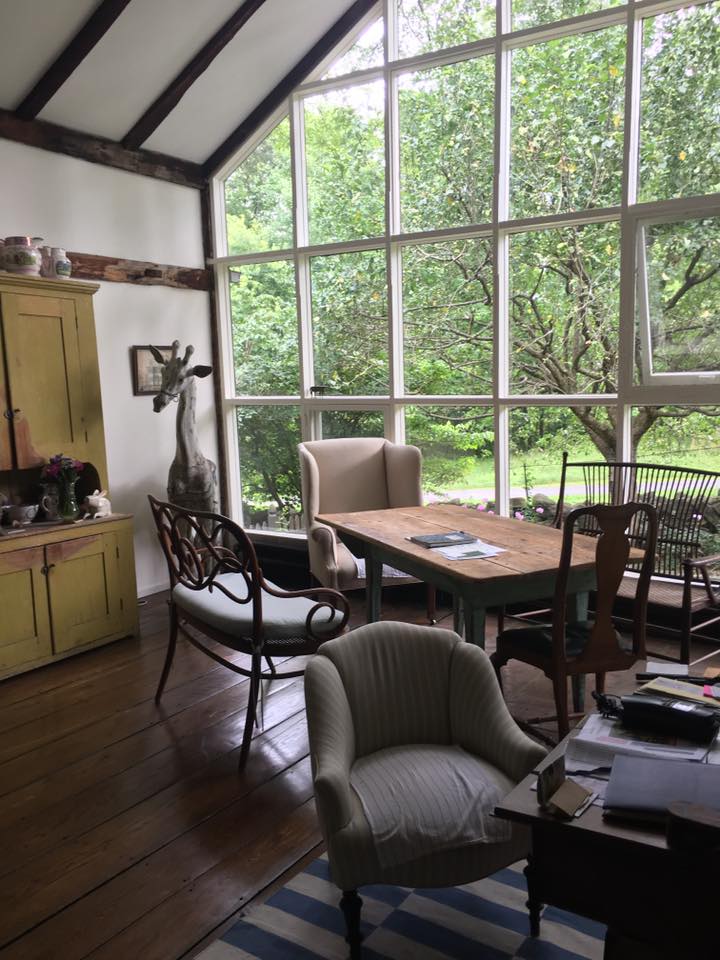 Though someone else now lives here, one gets the sense that it is almost like a house museum, with very little altered since Gorky’s days. “See, not much has changed,” says Clarke. Save for a couple of trees outside covering the view, everything—the tall glass windows, sloped ceiling, and wooden floors—is exactly like it was in that 70-year-old photograph.
Though someone else now lives here, one gets the sense that it is almost like a house museum, with very little altered since Gorky’s days. “See, not much has changed,” says Clarke. Save for a couple of trees outside covering the view, everything—the tall glass windows, sloped ceiling, and wooden floors—is exactly like it was in that 70-year-old photograph.
Gorky may not live here anymore, but he is not dead. His presence was felt in every corner of his home, and his memory comes alive every time someone gazes into one of his paintings. Gone too soon but immortal in spirit—that is the legacy of a true artist and a great man.
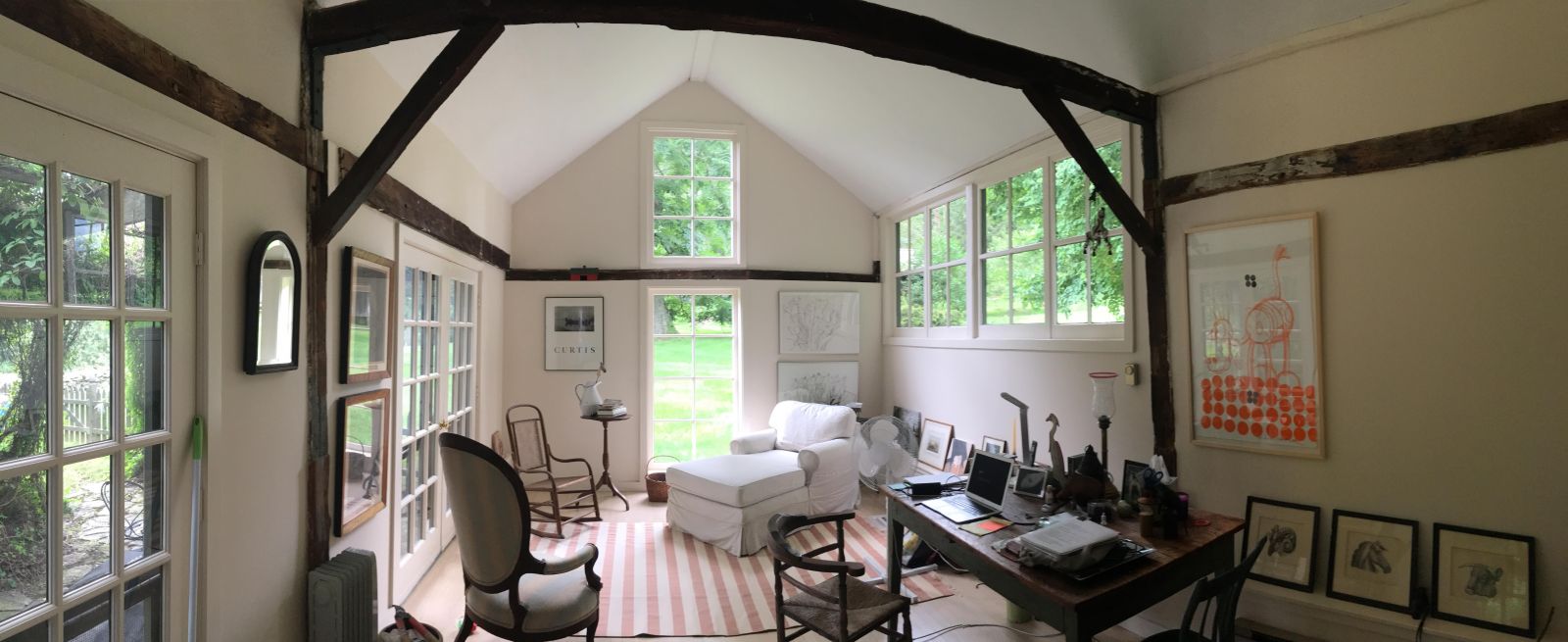 We walked into another room. “This was his studio. Two of the windows were added; otherwise, everything is the same,” said the owner. I’d imagine that Gorky would be pleased to see his space so well preserved and honored by a fellow artist who admires him so greatly. (Photo: Lilly Torosyan)
We walked into another room. “This was his studio. Two of the windows were added; otherwise, everything is the same,” said the owner. I’d imagine that Gorky would be pleased to see his space so well preserved and honored by a fellow artist who admires him so greatly. (Photo: Lilly Torosyan)
Join our community and receive regular updates!
Join now!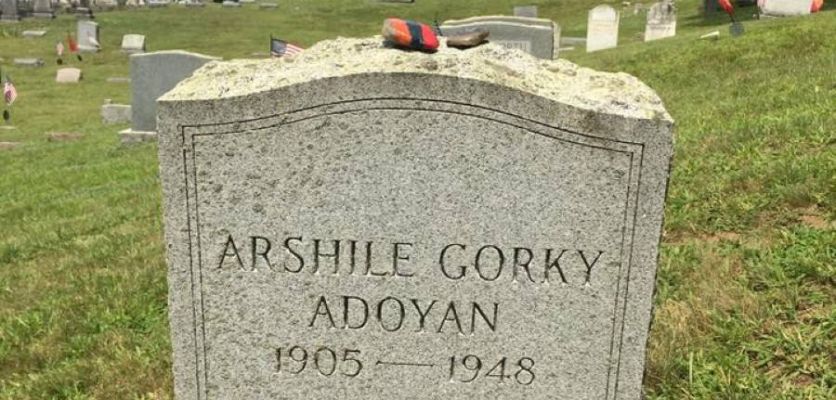
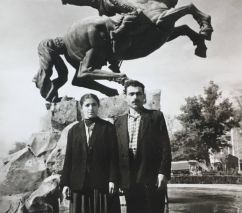




Attention!